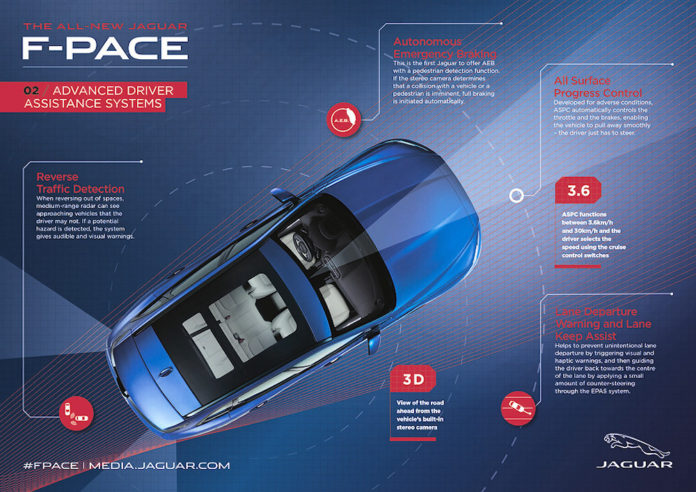Distracted driving constitutes an important factor when it comes to the increased risk of road accidents globally. Accidents, by their very nature, are unexpected and often catastrophic events. On the road this is magnified by speed and, in many cases, a lack of attention by the driver. Hazards can arise at any time and usually without notice which is why driving requires our full and absolute attention at all times. Sadly and all too often we are found wanting.
It can be argued that the rise of in-vehicle infotainment technology is, at least in part, responsible for a drop in general driving standards; we call it distracted driving and it is an increasing problem. The proliferation of hand-held consumer technology today, for example, has generated legislation to the extent that it is now illegal to use a mobile phone or tablet whilst at the wheel of a vehicle, although this doesn’t seem to stop some people. Being distracted while driving because of devices or dashboard touchscreen infotainment systems has given rise to an increase in lack of attentiveness.
Culpable Motorist
When it comes to being in charge of a motor vehicle we are all culpable. Road safety becomes our personal responsibility whenever we get behind the wheel. Human nature though means we can be complacent; we assume that because nothing untoward has happened then it probably won’t. This is when we allow ourselves to be distracted.
As mentioned, it could be anything that takes away our attention from the road ahead; from technology right through to gambolling lambs in a field or a glamorous pair of shoes in a shop window. That’s when accidents happen. Recently a police exercise where they used a covert truck to monitor HGV drivers found an astonishing lack of appropriate standards in driver behaviour, highlighting some of the dangerous things we can get up to on the road.
The cold, hard facts are that 95% of accidents are at least partly due to human error and 75% wholly so. That’s not good. It is as clear as crystal that the majority of these accidents could have been prevented had the driver been more careful, observant and had applied a little common sense.
Weary Motorist
Tiredness is not a distraction as such, but the outcome of this loss of attention remains the same. Driver fatigue causes thousands of road accidents each year. Research by RoPSA shows that driver fatigue is often a contributory factor in road accidents.
Private car drivers need to be aware that piloting a vehicle is both stressful and tiring. That’s why regular rest stops are recommended. HGV and lorry drivers are required by statute to take rest periods when travelling long distances. This is governed by law and the use of in-cab tachographs.
Nevertheless, commercial vehicle drivers are subject to the same physical laws as the rest of us; staying up late to watch a football match on television or attending a party all takes its toll in the morning. With industry, vehicle operators or fleet users have the option to install facial detection systems that can ‘see’ when a driver is sleepy. Facial recognition technology can spot yawning, nodding head movements and drooping eyes and will invoke an alarm that alerts the driver to his condition. Time to stop for a rest. This new equipment could soon make an appearance in private cars too.
Assisted Motorist
Despite motoring or governmental authorities occasionally promoting the occasional text and drive campaign to highlight the dangers it can be hard to see that the message about driving standards is truly getting through to Britain’s drivers.
To counter this, car manufacturers are upgrading in-car technology to include safety features that generally come under the heading of Advanced Driver Assistance Systems, or ADAS (See the sample image for the Jaguar F-Pace). This general heading includes facial recognition as mentioned and additionally a whole battery of safety devices for private car drivers and truck, PCV and HGV operatives.
ADAS utilises the latest radar and LiDAR sensors and cameras that constantly scan the vehicle proximity and send information to an on-board processor which, in turn, analyses the data instantly identifying potentially dangerous situations. Features like lane-keeping, proximity warnings, adaptive lighting, driver drowsiness detection and collision avoidance are all designed to protect us in our vehicles. Automatic braking for example, is designed to reduce the severity of high-speed collisions in the event of a lapse of driver attention. Even technophobes can’t argue with that.
ADAS can also include surround CCTV to cover all potential vehicle blind spots, on a reversing commercial or container lorry for example, thus helping to protect other road users during vehicle manoeuvres.
Future Motorist
We live in a world where completely autonomous, or driverless cars, are seen as the future of transport. ADAS are part of that future right now. The increasing availability and sophistication of new automotive safety systems, is changing how our vehicles and our industry are operated. If infotainment technology is designed to enhance our lives on the road so ADAS is designed to keep us alert to all the dangers around us, whether that is road hazards, other drivers and even ourselves.












